The Valerian Family is again a small plant family in the B.I. and I choose to do this as it comes before the family of last week which was the Teasel Family.
The best known is probably the Common Valerian although perhaps the Red Valerian is now a lot more common, especially here in the Midlands!
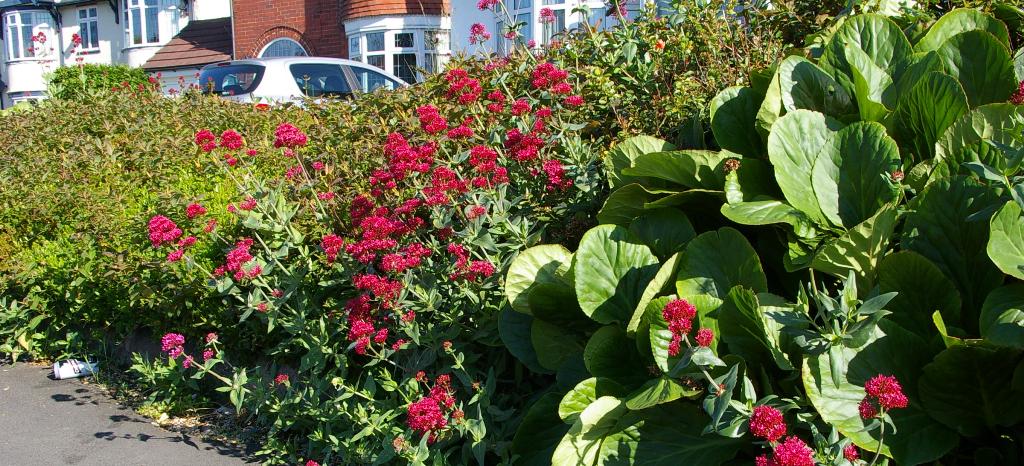
More info can be found through the links provided from online websites and the pictures are by Mike Poulton (M.P.) and Ian Trueman (I.C.T.) of Ecorecord and Wikipedia Common.
If the plants are in the Flora of Birmingham and the Black Country a FBBC will be added behind the Common name of the plant in the main contents.
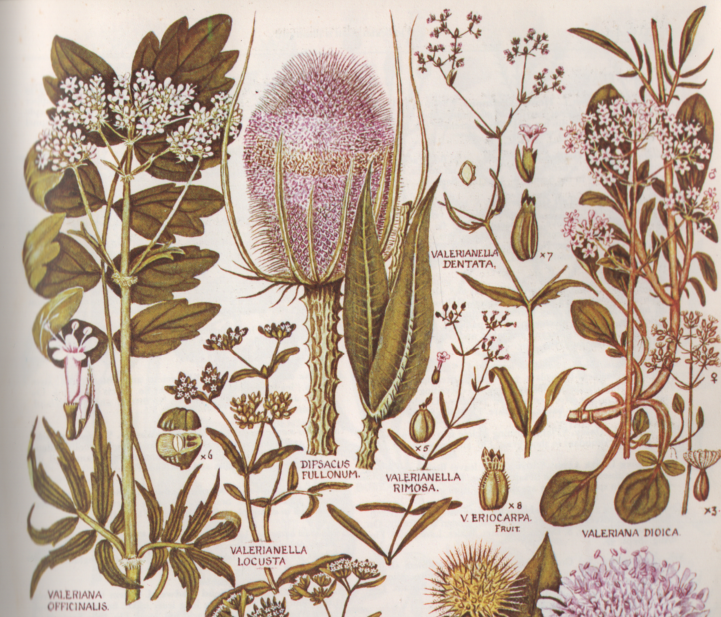
The Concise British Flora in Colour by W. Keble Martin
Above also the other half a page of Plate 43 in the Concise British Flora in Colour, showing mainly some members of the Valerian family. In the last post the Teasel family half was shown. The Common Teasel is also mixed in the picture above. This book was aquired by myself for the Kew Diploma Course in 1986 as one of the reference books to get! Still a beautifully illustrated book with 1486 species illustrated in 100 plates of all the flowering plant families of the B. I. The work was completed by W. Keble Martin in 60 years and first published in 1965.
Contents:
The Valerian family only has 3 genera:
Valeriana
Plants of the World Online accepts over 420 species and hybrids. In the B.I. 4 species can be found but 2 are true natives.
Centranthus
There are about twelve species in the genus but we know only C. ruber, which in non native.
and Valerianella
73 species are listed in Wikipedia but in the B.I. we know of 5 species; 2 native and 3 are Archaeophyte. Ripe fruits are essential for determination of the correct species.(Stace)
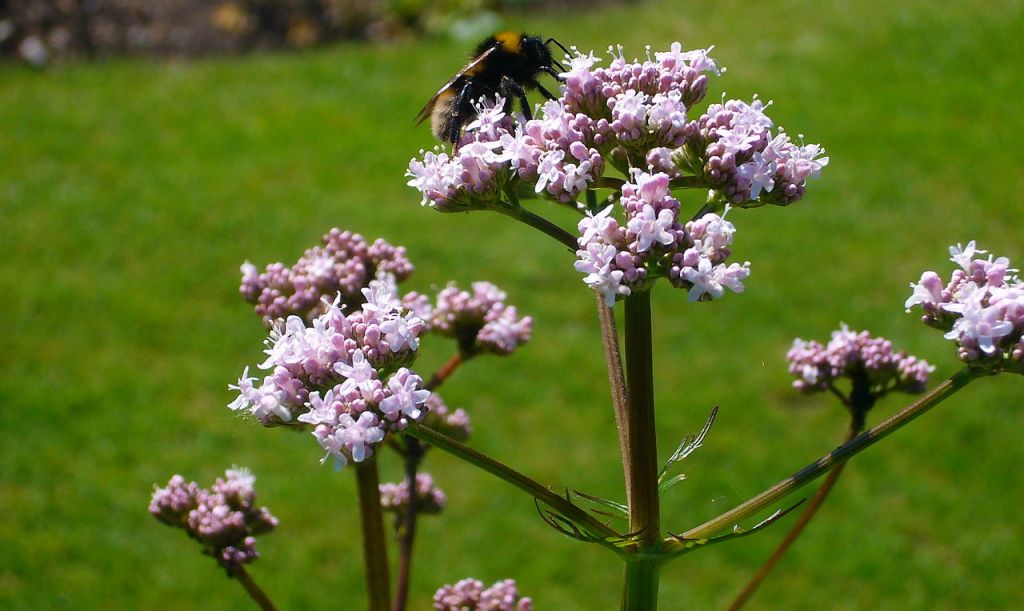
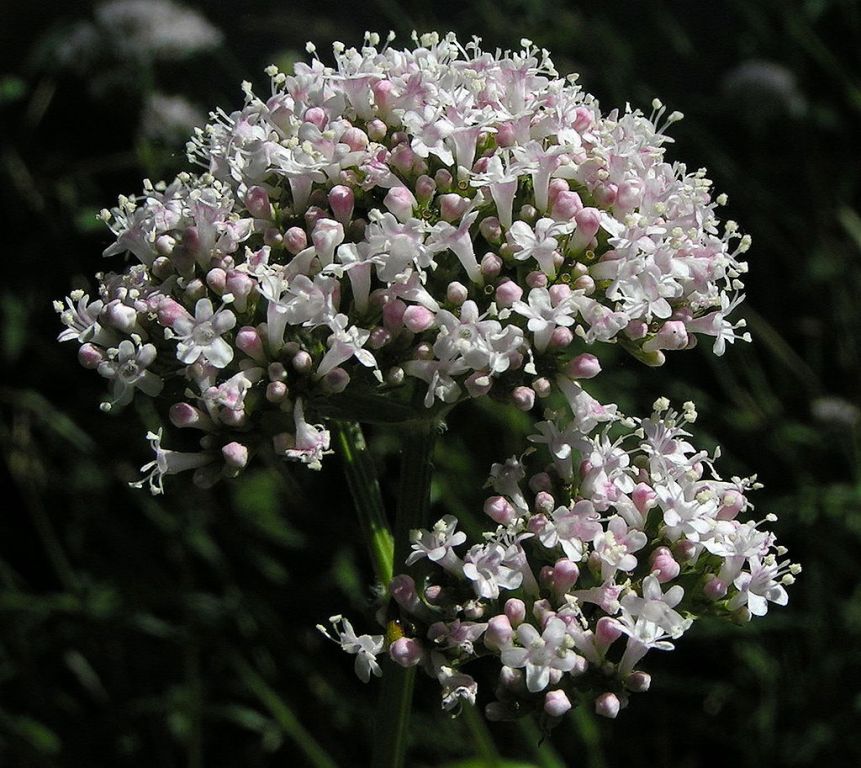
Valeriana officinalis or Common Valerian FBBC
This is a perennial herb found in a wide range of habitats. Subsp. sambucifolia occurs in damp grassland, marshes, fens, water margins and ditches, and wet woods throughout the country; subsp. collina in dry calcareous grasslands, hedge banks and woodland rides in S. and C. Britain.
Common Valerian is a well-known plant to me growing tall in the reedbeds and along the ditches in my native ‘Holland’. It has an intoxicating sweet smell which apparently attracts many fly species, especially hoverflies of the genus Eristalis. It is consumed as food by the larvae of some Lepidoptera (butterfly and moth) species, including the grey pug.
An essential oil from the leaves and root is used as a flavouring in ice cream, baked goods, condiments etc. It is especially important in apple flavours. The leaves can also be used as a condiment. The plant is used in moderation as a herbal tea.
Crude extract of valerian root may have sedative and anxiolytic effects, and is commonly sold in dietary supplement capsules to promote sleep, but there is insufficient clinical evidence that it is effective for this purpose. Its roots and leaves cause a catnip-like response in cats.
It is said that prolonged medicinal use of this plant can lead to addiction. A course of treatment should not exceed 3 months. Adverse effects can include: headaches (rare), giddiness, nausea, excitability & agitation, heart palpitations (rare), insomnia (rare). Do not take with other sedatives (e.g. alcohol) or before driving (or alertness required).
Valerian has been used as a herb in traditional medicine since at least the time of ancient Greece and Rome. Hippocrates described its properties, and Galen later prescribed it as a remedy for insomnia. In medieval Sweden, it was sometimes placed in the wedding clothes of the groom to ward off the “envy” of the elves. In the 16th century, Pilgram Marpeck prescribed valerian tea for a sick woman.
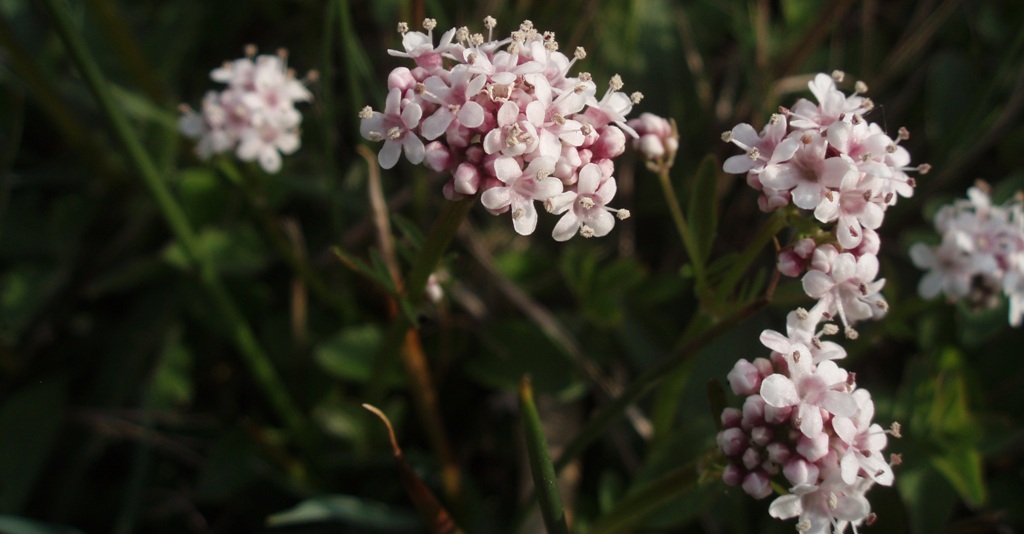
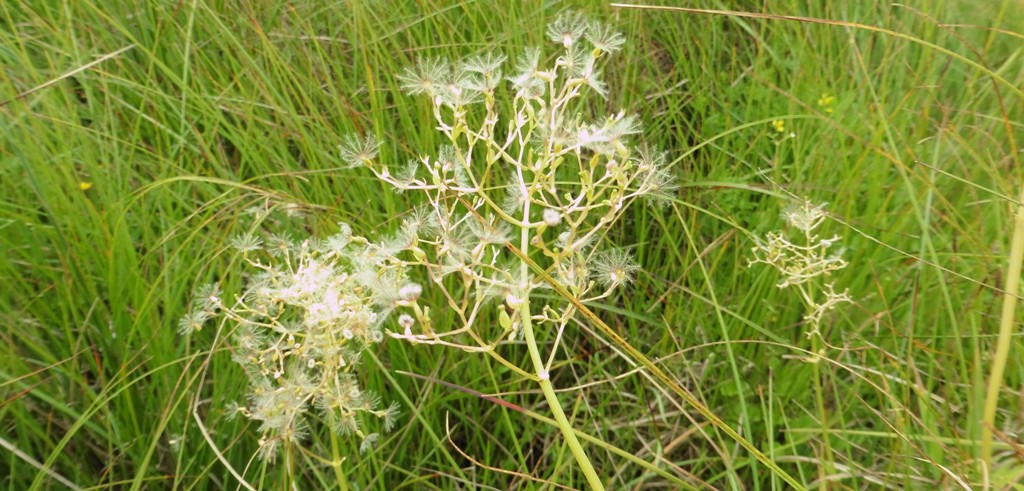
Valeriana dioica or Marsh Valerian FBBC
A perennial herb of calcareous mires, marshy grassland, water-meadows, flushes, Salix fen-carr and Alnus woods.
Interestingly it is a dioecious species, with male and female flowers on separate individuals, and it is pollinated by small flies.
Sleeping potions known as Valerian were derived from this and other plants from the same genus; they were used not only as a treatment for insomnia but also reputedly by thieves who spiked the drinks of intended victims. Valerian is still used as the source of sedatives for relaxing the central nervous system.
The odoriferous root is slowly baked for 2 days and then eaten as a vegetable, used in soups or made into a bread. Seed is parched and eaten.
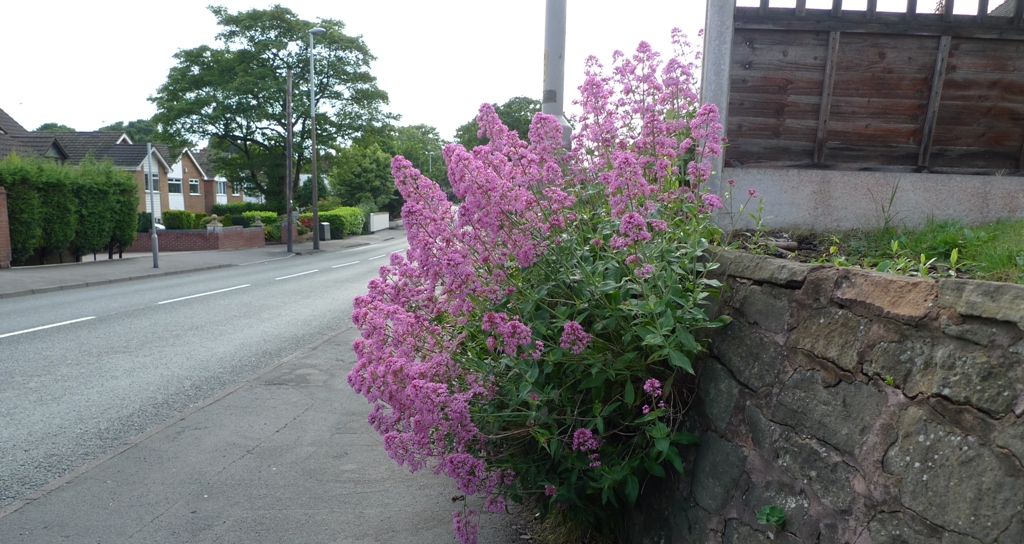
Centranthus ruber or Red Valerian FBBC
A perennial herb thoroughly naturalised on sea-cliffs, limestone rock outcrops and pavements, rocky waste ground, in quarries, on railway banks, on old walls and buildings, and in other well-drained, disturbed and open habitats. Neophyte; native of S.W. Europe and the Mediterranean region.
C. ruber was grown in Britain by 1597 and is a popular garden plant. It was first recorded in the wild in 1763 (Cambs.). There are many more records for this species than when it was mapped in the 1962 Atlas, although its range has not changed significantly.
The most typical color is a brick red (as in the picture below headline) or purplish red (picture above), but colors include deep crimson, pale pink, and lavender. Centranthus ruber ‘Albus’ (about 10% of individuals) has white blooms. Flowering takes place in early summer and, in cool summer areas, continues sporadically throughout the summer and into autumn. The cultivar ‘coccineus’ is especially long-blooming. The blooms have a strong and somewhat rank scent.
Seeds have tufts similar to dandelions that allow wind dispersal, and as such can self-seed freely and become invasive if not properly controlled. I know this from personal experience seeing it grow and flower in every single crack and crevices!
They are pollinated by both bees and butterflies and the plant is noted for attracting insects. It is used as a food plant by the larvae of some Lepidoptera species including angle shades.
Young leaves can be eaten raw or cooked as greens. But Ken Fern from PFAF finds that they are rather bitter and rather less than desirable. Roots can be cooked and used in soups.
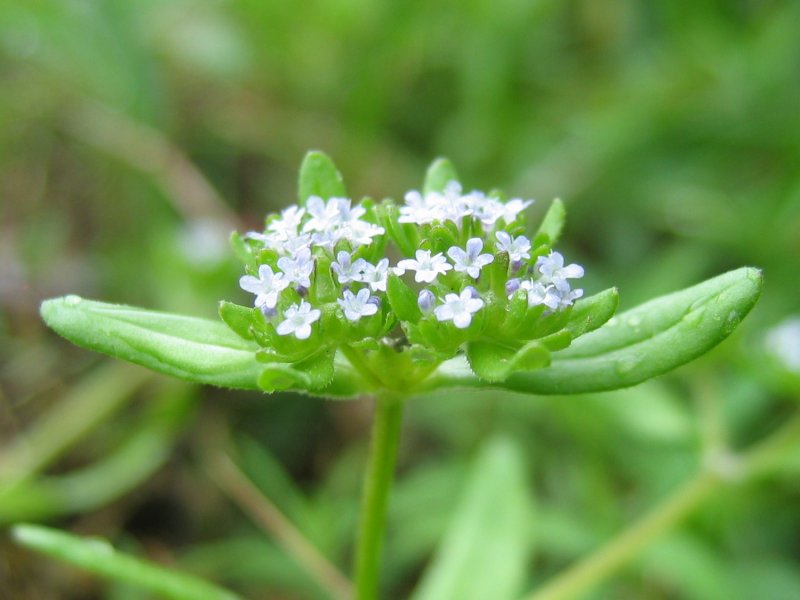
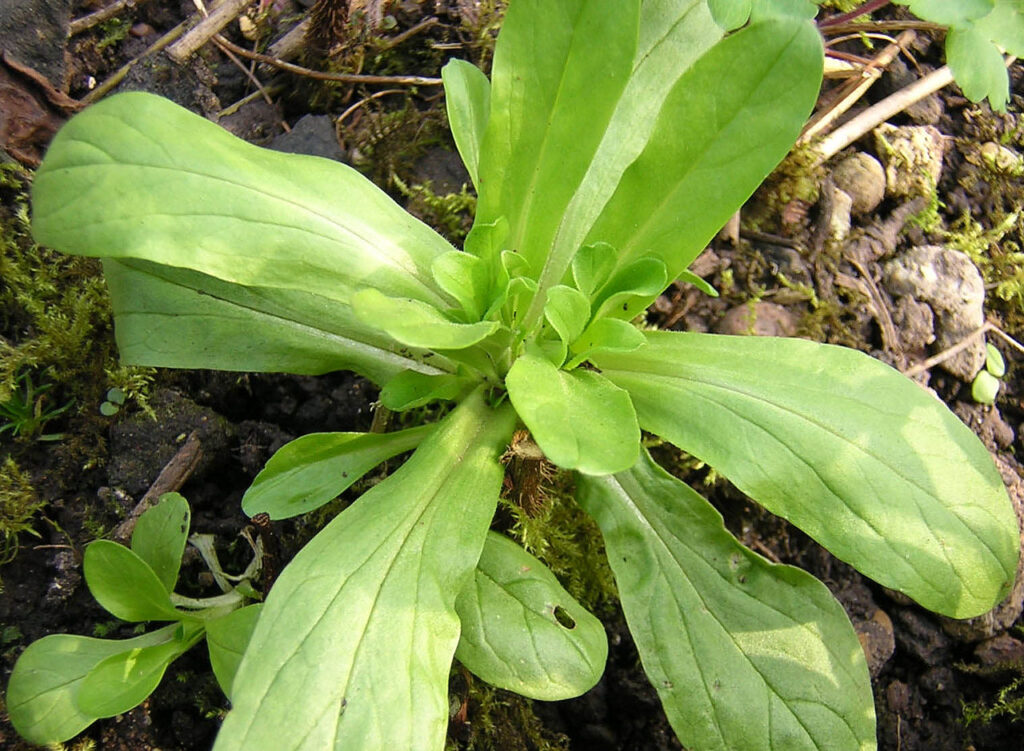
Valerianella locusta or Common Cornsalad FBBC
A winter-annual which occurs with other annuals on thin soils around rock outcrops and on scree, and on sand dunes and coastal shingle. It also grows in a wide range of disturbed habitats, including walls, gravel paths, railway tracks, in paving, gardens and, rarely, on arable land. Coastal populations are often the dwarf var. dunensis.
The species is commercially grown as a winter salad crop.
Cornsalad or Lamb’s Lettuce is another name for it, has a characteristic nutty flavour, dark green colour, and soft texture, and is popularly served as salad greens.
Like other formerly foraged greens, cornsalad has many nutrients, including three times as much vitamin C as lettuce, beta-carotene, B6, iron, and potassium. It is best if gathered before flowers appear.
Cornsalad was originally foraged by European peasants. Jean-Baptiste de La Quintinie, royal gardener of King Louis XIV, introduced it to kitchen gardening. It has been eaten in Britain for centuries and appears in John Gerard‘s Herbal of 1597. It was grown commercially in London from the late 18th or early 19th century and appeared on markets as a winter vegetable, but it only became available in modern supermarkets there in the 1980s.
other species:
This autumn-germinating annual is found mainly in sites associated with human activity. Habitats include walls, gravel paths, paving, railway tracks and gardens. It does not occur in arable land.
An annual of arable land, generally found on fields margins which have escaped intensive management. It occurs on sand, calcareous clay and chalk soils, often as part of a species-rich annual community.
An annual of arable land, especially on chalky soils, but locally also on sand and calcareous clay. It can be found most frequently in the corners of fields and along field edges which have escaped intensive management.
A winter-annual of drought-prone, stony substrates, found on cliff edges, calcareous banks, walls, quarries and other dry open habitats. It has been considered as native on bare and disturbed limestone and hard chalk in Dorset and the Isle of Wight.
